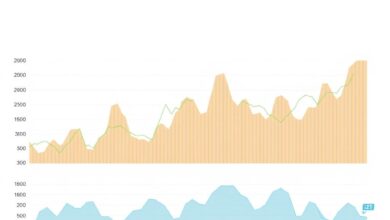How to build credit while investing for the future

To elevate your credit score, prioritize timely debt payments. A consistent track record of on-time payments is a cornerstone of any robust financial profile. Missed deadlines can significantly impact your rating, so setting up automatic payments or reminders will help maintain this crucial balance.
Crafting an effective investment strategy involves understanding the interplay between your current obligations and future assets. Diversifying your portfolio not only mitigates risks but can also enhance your overall financial health. Consider low-cost index funds or ETFs as reliable vehicles to grow wealth while managing exposure to market volatility.
Monitoring your credit utilization ratio is equally important. Aim to keep it below 30% of your total available credit. This practice reflects responsible management of debt and can positively influence lenders’ perceptions when you seek additional financing for investments or other ventures.
Lastly, regularly review your credit report for inaccuracies. Disputing errors can lead to significant improvements in your score, paving the way for better loan terms and investment opportunities down the line. A proactive approach ensures you’re not only building wealth but doing so with a solid financial foundation.
Understanding Credit Scores
A score of 700 or above is generally considered good, while scores below 600 may indicate issues in financial management. To enhance this metric, focus on maintaining a balanced utilization ratio of your available credit.
- Payment History: Timely payments account for approximately 35% of your score. Set up reminders or automatic payments to avoid missed deadlines.
- Credit Utilization: Aim to keep your utilization below 30%. If you have a credit limit of $10,000, ensure that your outstanding balance does not exceed $3,000.
- Length of Credit History: A longer history can positively impact your score. Avoid closing old accounts, as they contribute to the duration of your financial profile.
- Diversity of Accounts: Having a mix of installment loans and revolving credit can benefit your overall rating. Consider a blend that aligns with your investment strategy.
Regularly monitoring your report is crucial. Use free resources to check for inaccuracies and dispute any discrepancies immediately. Keeping an eye on this document helps in adjusting strategies effectively.
- Review Your Report: Obtain free reports annually from major agencies like Experian, TransUnion, and Equifax.
- Avoid New Hard Inquiries: Limit applications for new credit within a short period. Each inquiry can reduce your score temporarily.
- Consider Becoming an Authorized User: Joining someone else’s account with good standing can help improve your own rating without the risk associated with taking on new debt.
An optimized score complements sound financial decisions and supports long-term goals in wealth accumulation. This metric is not just a number; it represents opportunities for favorable interest rates and terms that align with robust financial strategies.
Types of Investment Accounts
Choose a brokerage account for flexibility. It allows the buying and selling of various assets such as stocks, ETFs, and mutual funds without restrictions on withdrawals. This approach can enhance your investment strategy while managing debt effectively.
Consider an Individual Retirement Account (IRA) for tax advantages. Traditional IRAs offer tax-deferred growth, while Roth IRAs provide tax-free withdrawals in retirement. Both contribute positively to your credit score by promoting long-term financial health.
A Health Savings Account (HSA) serves dual purposes: saving for medical expenses and investing for growth. Contributions are tax-deductible, boosting your overall balance and reducing taxable income.
For education savings, explore a 529 plan. This account allows you to invest funds that grow tax-free for qualified education expenses, aligning with goals of wealth accumulation and sound financial management.
Real estate investment trusts (REITs) are another option. These allow you to invest in real estate without direct ownership, providing potential rental income and appreciation benefits. They can serve as a buffer against inflation while diversifying your portfolio.
Each account type has unique attributes that can complement your financial objectives. Align them with your overall investment strategy to optimize growth and maintain a healthy balance between risk and reward.
Strategies for Dual Growth
Prioritize timely payments on any obligations to maintain a high score. Delinquent accounts can severely impact your credit rating, which in turn influences your borrowing capacity for investment opportunities.
Adopt an investment strategy that incorporates regular contributions to both savings and growth-focused accounts. Allocating funds towards diversified assets can yield substantial returns while preserving liquidity for immediate financial needs.
Monitor your debt levels closely. Aim to keep your credit utilization ratio below 30% of available limits to positively influence your score. This balance is critical for securing favorable terms on loans or lines of credit needed for larger investments.
Utilize automated tools or apps that track expenses and investments simultaneously. These resources can provide insights into spending habits, helping you adjust your budget and maximize both savings and potential investment gains.
Consider opening a secured credit card if you’re rebuilding or establishing a solid score. This route allows you to demonstrate responsible credit behavior while also providing a platform for future investment financing options.
Engage with financial advisors who can tailor plans to harmonize your borrowing needs with growth ambitions. Their expertise can help identify optimal asset classes suited to your risk tolerance, ensuring balanced development in both areas.
Avoiding Common Pitfalls
Monitor your debt levels closely. High balances can severely impact your credit score, limiting access to favorable interest rates on loans and lines of credit.
Stay disciplined with your finance management. Avoid taking on unnecessary obligations that could hinder your investment strategy. Prioritize paying off high-interest debt before committing additional resources to investments.
Utilize automatic payments for bills to ensure timely settlements, which positively influence your credit score. Missing payments can result in costly penalties and a drop in your financial standing.
Diversify investment accounts wisely. Concentrating funds in one area might yield short-term gains but exposes you to higher risks. Balance your portfolio across various assets while keeping an eye on potential debts incurred through margin trading or leveraged investments.
Regularly review your credit report for inaccuracies. Discrepancies can unjustly lower your rating, hampering future financing opportunities. Challenge any errors promptly.
Engage with financial advisors or utilize online tools to refine your investment approach and maintain a healthy debt-to-income ratio. This balance is fundamental for sustainable growth and securing favorable lending conditions.







